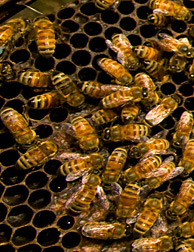Citrus psorosis virus (CPsV)
A Viral Biorealm page on the family Citrus psorosis virus (CPsV)

Baltimore Classification
Group V: (-) sense single-stranded RNA viruses
Higher order categories
Family: Ophioviridae
Genus: Ophiovirus
Description and Significance
Citrus psorosis virus (CpsV) is considered to be the most infectious and problematic virus pathogen of citrus plants worldwide. There is a variety of many different strains and symptoms which vary from mild, type 'A,' to severe, type 'B.' Symptoms can be exhibited in leaves, fruit, bark, trunk and branches. Leaf infection displays chlorotic flecks, or a decrease in chlorophyll/healthy coloring, mottling and spots; fruit may show ring-like chlorotic areas[1]. Chlorosis decreases plant's efficiency to perform photosynthesis, or ability to produce carbohydrates necessary for energy, organism support and growth[1]. The most common symptom of psorosis is deterioration of bark, such as flaking or scaling on trunk and limbs. Early stages of this deterioration are marked by blisters or bubbles which grow and later result in patches.
Citrus plants which have been reported to exhibit this virus are grapefuit, mandarin, orange and tangerine, lemon, pomelo and lime.
Genome Structure
Virion Structure of a ______virus
Reproductive Cycle of a ______virus in a Host Cell
Viral Ecology & Pathology
References
Example:
Weir, Jerry P. " Genomic Organization and Evolution of the Human Herpesviruses." Virus Genes 16.1 (1998): 85-93.
Page authored for BIOL 375 Virology, September 2010
